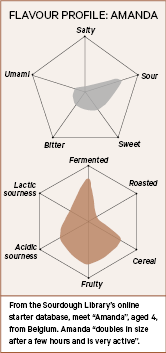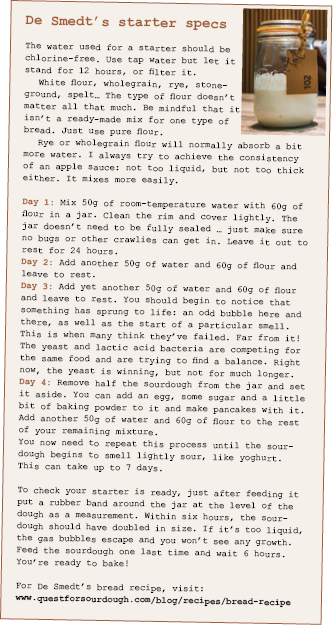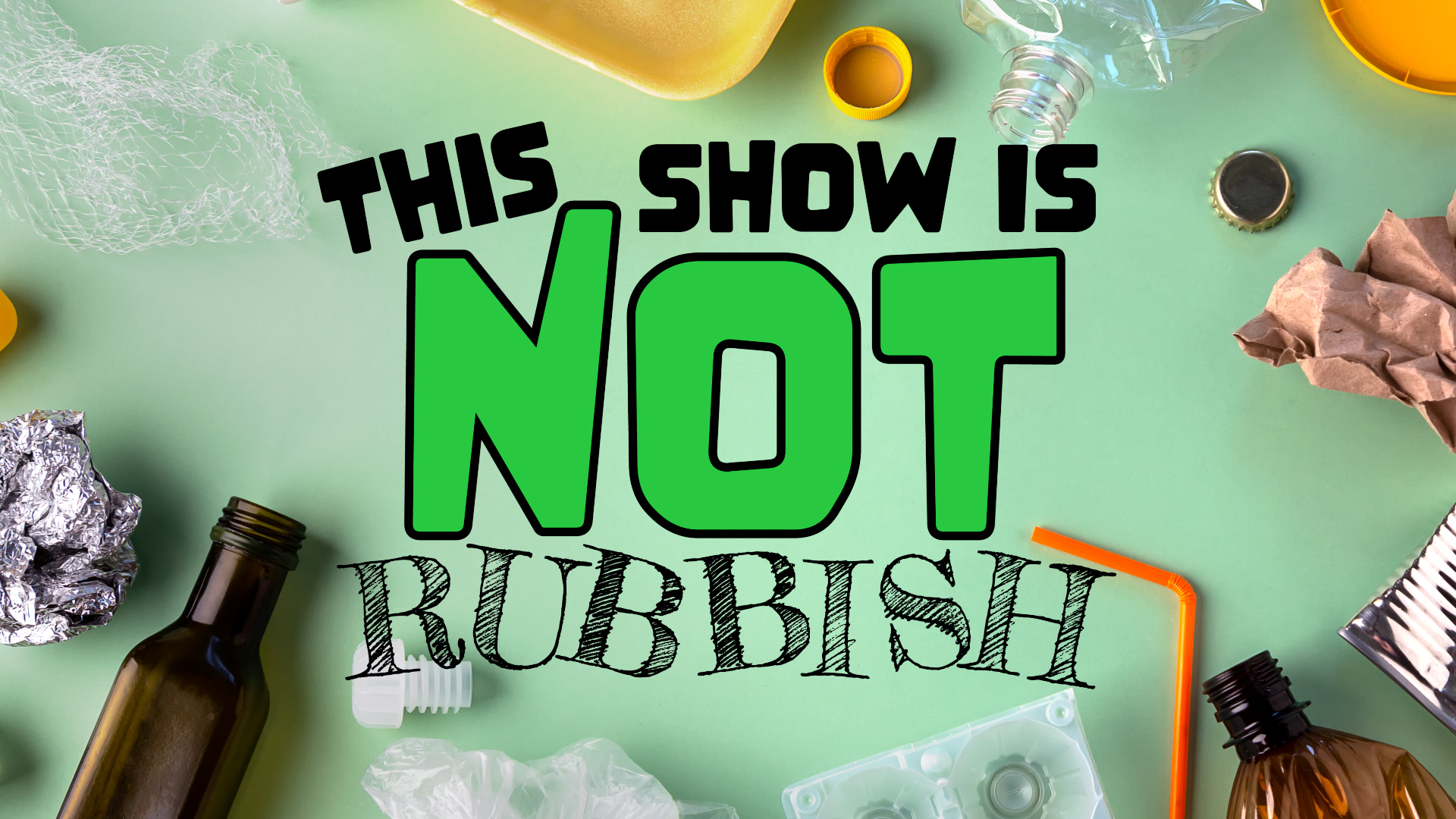The science of sourdough bread is anything but run of the mill. Kelly Wong gets a starter lesson from sourdough librarian Karl De Smedt.
Apply students’ knowledge of chemical reactions in this resource about the science of bread baking. It is best suited to Year 7-10 Chemistry and Biology students.
Word Count: 1933

If one thing became synonymous with the pandemic lockdowns over the last year, it was baking bread at home. As many countries went into lockdown and flour flew off supermarket shelves along with toilet paper, many found themselves iso-baking bread for the first time. Sourdough bread became the third most searched recipe on Google in 2020. But this sudden global collective interest in baking bread, and in particular sourdough, is no new trend: the art and science of it has been around for thousands of years.
Bread-making has survived through ancient civilisations and it’s achieved global domination. Without it, we wouldn’t have crisp wood-fired pizzas, crusty French baguettes, fluffy “steamed bun” baos at yum cha, or even the iconic Australian culinary gift to the world, the democracy sausage (in bread). At the centre of it all is a bubbling fermentation process, unchanged over time.
Sourdough is a living thing. The simple combination of flour and water is more or less starting life from thin air. The basis of all sourdough bread is the starter, or mother, which couldn’t be more apt. It incorporates yeast and bacteria from the surrounding environment to create that characteristic artisanal tang.
But although the ingredients are simple, the biology and chemistry behind sourdough bread reveals a complex ecosystem of microbes.
Starting the sourdough journey
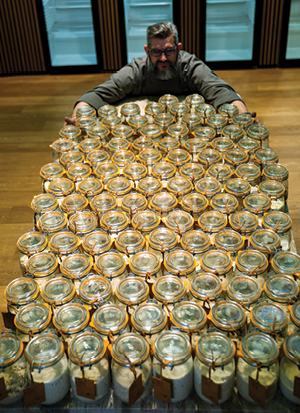
For most of human history, sourdough was the dominant form of leavened bread. It wasn’t until about 150 years ago that commercial baker’s yeast, Saccharomyces cerevisiae, was adopted as the most common yeast used to bake bread (as well as to brew beer and make wine). Prior to that, for many thousands of years, bread was rudimentary. It mostly existed as flatbread-like forms.
The discovery of 36,000-year-old fragments of grinding stones, at the Cuddie Springs archaeological site in western New South Wales, suggests that Aboriginal people were the first bakers. In northeastern Jordan, charred food remains made from grain 14,400 years ago suggest the early origins of cooked bread-like products.
However, it wasn’t until the Neolithic Age, approximately 12,000 years ago, that the development of agriculture and grain harvesting allowed humans to find solace in the warm, nourishing embrace of carbohydrates. Neolithic sites with bread remains have been found throughout Europe and southwest Asia.
Evidence of bread production is written on the walls of Ancient Egyptian tombs and temples, showing the bread-baking process in detail. Ancient baking tools such as ovens, grinding stones and pottery have been found containing traces of yeast. The Ancient Egyptians are credited with the development of the first sourdoughs, which is likely to have been purely accidental; a flour-water mixture may have been left out for too long and, just by happenstance, wild yeast found its way into the dough.
It’s the motherlode
This accidental process has not really changed apart from now becoming accidentally-on-purpose. Sourdough starters today are created by leaving a combination of flour and water to interact with its environment. This rich microbial community varies in every single sourdough starter; the geography, the microclimates, types of grains, and even the individual baker’s hands all play a part, making every starter unique.
The importance of sourdough is so esteemed that an entire library dedicated to preserving starters exists in Belgium. Karl De Smedt, the world’s first and only sourdough librarian, has a diploma in bakery. He joined Belgian bakery supplier Puratos back in 1994 as a test baker, then became a technical advisor and product trainer, and today is in charge of the Center for Bread Flavor.
The library was opened in 2013 by Puratos, who have long been doing research and development into bread – part of a network including the Italian universities of Bari and Bolzano and the Microbe Institute. “Once in the library we have the chance to investigate them. They are part of scientific studies or projects to better understand how they work, what they do, how to maintain them and so much more,” says De Smedt.
De Smedt has 125 starters from around the world housed in the library’s refrigerator. These samples are numbered (not named, as some sourdough enthusiasts do), and refreshed every two months with the original flour from which it was made, to replicate the conditions of the original bakery. A sample from each starter is sent to a lab to analyse and document its microorganisms. According to the Puratos website, more than 1,400 strains of wild yeast and lactic bacteria have been isolated and recorded so far from the project. These microorganisms are stored at -80°C to preserve the biodiversity of the starters for the future.
In addition to the physical library, the Sourdough Library has an online database, which has 2,279 starters registered to date. Many of these have been given names and had their qualities described. “For a starter to become part of the Sourdough Library it must be made from a spontaneous fermentation and not prepared with a commercial starter culture,” explains De Smedt. “We look at its origins, the type of cereal or grain that is used, plus the history behind it.”
Some of the more unconventional starters have included one from Mexico which is fed beer, eggs and lime. There’s a Japanese variety made with cooked sake rice. But the most bizarre starter, says De Smedt, is number 108 from Verona, Italy. It contains cow dung. With such a unique preservation project, he has applied to UNESCO for the library to be recognised as a World Heritage listing under criterion 6 (an association with living traditions) and criterion 10 (containing the most important and significant natural habitats for in-situ conservation of biological diversity).
“Although some starters look the same, they smell and taste different,” he says. “Each starter is unique; no two have the same composition. They all have their unique consortium of yeasts and lactic acid bacteria that influences the flavour.”
Putting the sour into sourdough
Understanding sourdough is a balance of microbiology and biochemistry. The rising stars of sourdough, aside from yeast, are lactic acid bacteria known as Lactobacillaceae.
Just like in brewing beer and winemaking, yeast will turn sugars that are present in the starch into carbon dioxide and ethanol. However, the lactic acid bacteria – not present in breads made with only yeast – is responsible for the distinct sour, more interesting, more complex flavours.

Some recipes call for adding vinegar and yoghurt to replicate the “sour” part of sourdough. “But this is not even getting close to the other effects yeasts and bacteria have on the water-flour matrix. Flavour, texture, enzymes, proteins, minerals can all be affected,” points out Kate Howell, Associate Professor of Food Chemistry and Director of Research Training at the University of Melbourne. Thus the outcome of your sourdough depends on the type of bacteria in your starter. There are two main types: homofermentative bacteria which thrive at 35°C and produce lactic acid, and heterofermentative bacteria which thrive at 20°C, whose byproducts are a combination of lactic acid and acetic acid.
A more liquid sourdough kept at warmer temperatures will encourage the growth of the homofermentation and thus lactic acid will drive the flavour profile of the bread. The end product will taste more milky and creamy, like yoghurt. In the wetter starter, the microorganisms will be able to interact much more easily with the sugars and starches, so it will regularly need to be fed.
“In the library we investigate them to better understand how they work, what they do, how to maintain them and so much more.”
A stiffer, thicker sourdough kept at cooler temperatures favours more acetic acid production, so the flavour of your bread will lean towards sour and tangy, like vinegar. Not only that, the yeast and bacteria consume the sugars and starches more slowly, reducing the need for frequent feedings.
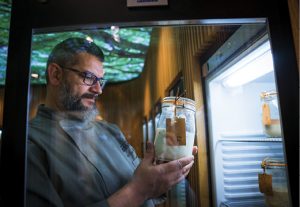
Over time, if the starter has been sitting out for a while, the organic acids will continue to increase. If it sits for too long, it might become too acidic or tangy; eventually the build-up of ethanol, which kills most microorganisms, can cause the collapse of the starter.
So what exactly are the perfect conditions for sourdough? It’s not a straightforward answer. “It depends on the style of bread, needs of the baker and others besides,” according to Howell.
“Fermentation up to 70 hours is okay. Any longer means that gluten complexes start to degrade and the bread doesn’t rise.
“If the starter is refreshed with flour or water (at least every three days), and kept at room temperature (~22–25°C) or cooler, a nice dough fermentation can be done in about 24 hours (with some time retarding fermentation in the fridge to develop flavours).”
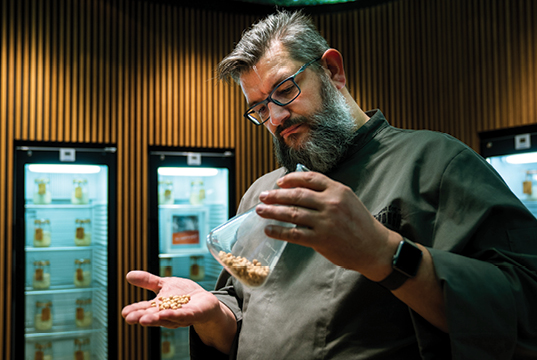
The knead to know more

The beauty of sourdough is that, once established, healthy and thriving, a starter has the potential to evolve. As long as you keep feeding it, starters can keep on living. Some have a long history in kitchens, with a tradition of up to 200 years old, passing through many environments, and many hands. But, there’s no way to date a sourdough starter.
“From a microbiological point of view, they are only as old as the last time they were refreshed with new flour and water,” explains Howell.
There are many reasons people are interested in studying sourdough starters. Compared to the baker’s yeast S. cerevisiae, the types of yeast found in sourdough, generally from the Kazachstania genera, are not well described. According to Howell, by isolating the DNA from an older yeast in a dried sample of an old starter, you could compare the genome to yeast that exists nowadays. Genes are likely to have been enriched or changed over time.
De Smedt posits there could be greater biodiversity in older starters, which could be linked to many factors such as fewer pesticides in use when they were created, more diverse grains, and less monoculture of microorganisms. It’s just one of the research questions he hopes to answer.
“Bread is something magnificent, a human invention. You cannot pick it from a tree or grow it in a field. It’s human genius.”
Other studies, such as one involving Howell, demonstrate that sourdough breads benefit from mixed microbial communities. Not only can microbial diversity improve the taste and texture of the bread – it may also change the loaf’s health properties.
A slice of good health
As the world continues to grapple with food security issues, improving the nutritional quality of food is an increasing area of interest, particularly in grains and staples.
The organic acids created by the bacteria reduces the pH of the dough. “This means a few things. Enzymes can be activated, leading to mobilisation of minerals, production of aroma and flavours, and development of the gluten matrix,” elaborates Howell.
Sourdough bread generally has a lower glycemic index compared with other types of bread.
Research led by Howell has shown that the interactions of the yeasts and bacteria are likely to influence the production of enzymes which lead to the modification of gliadin, a peptide component of gluten, and thus to an altered gluten content. Because of this, some people who have gastrointestinal sensitivities are able to consume sourdough bread without the side effects.
The biochemical process also has the ability to unlock some dietary minerals in flour like iron. The lower pH of sourdough activates phytases during fermentation, which makes iron more bioactive and available for absorption by the body.
For many people, including De Smedt, the positives of sourdough surpass any other type of bread.
“It’s a no-brainer when having the choice. With sourdough bread there is only a positive message about bread!” he says. “Bread is such an important staple food in human history. Bread is something magnificent, a human invention. You cannot pick it from a tree or grow it in a field. It’s human genius.
“Science and technology will help us understand that it is the best way to bake bread for everybody.”
This article was written by Kelly Wong, Social Media manager at The Royal Institution of Australia and a fan of bread in all its global forms, for Cosmos Magazine Issue 90.
Cosmos magazine is Australia’s only dedicated print science publication. Subscribe here to get your quarterly fill of the best Science of Everything, from the chemistry of fireworks to cutting-edge Australian innovation.
Login or Sign up for FREE to download the educational resources
